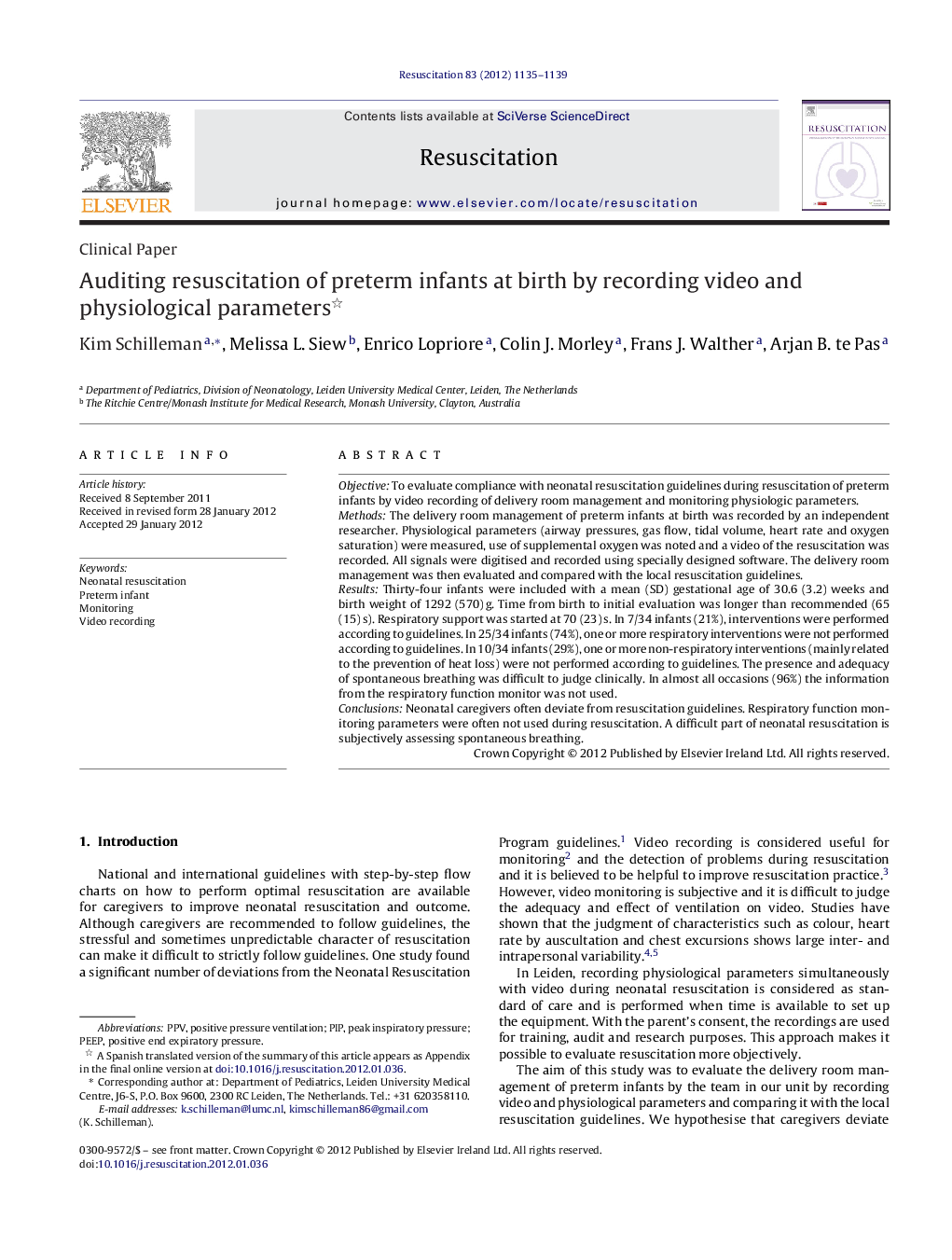| Article ID | Journal | Published Year | Pages | File Type |
|---|---|---|---|---|
| 5999026 | Resuscitation | 2012 | 5 Pages |
ObjectiveTo evaluate compliance with neonatal resuscitation guidelines during resuscitation of preterm infants by video recording of delivery room management and monitoring physiologic parameters.MethodsThe delivery room management of preterm infants at birth was recorded by an independent researcher. Physiological parameters (airway pressures, gas flow, tidal volume, heart rate and oxygen saturation) were measured, use of supplemental oxygen was noted and a video of the resuscitation was recorded. All signals were digitised and recorded using specially designed software. The delivery room management was then evaluated and compared with the local resuscitation guidelines.ResultsThirty-four infants were included with a mean (SD) gestational age of 30.6 (3.2) weeks and birth weight of 1292 (570)Â g. Time from birth to initial evaluation was longer than recommended (65 (15)Â s). Respiratory support was started at 70 (23)Â s. In 7/34 infants (21%), interventions were performed according to guidelines. In 25/34 infants (74%), one or more respiratory interventions were not performed according to guidelines. In 10/34 infants (29%), one or more non-respiratory interventions (mainly related to the prevention of heat loss) were not performed according to guidelines. The presence and adequacy of spontaneous breathing was difficult to judge clinically. In almost all occasions (96%) the information from the respiratory function monitor was not used.ConclusionsNeonatal caregivers often deviate from resuscitation guidelines. Respiratory function monitoring parameters were often not used during resuscitation. A difficult part of neonatal resuscitation is subjectively assessing spontaneous breathing.
